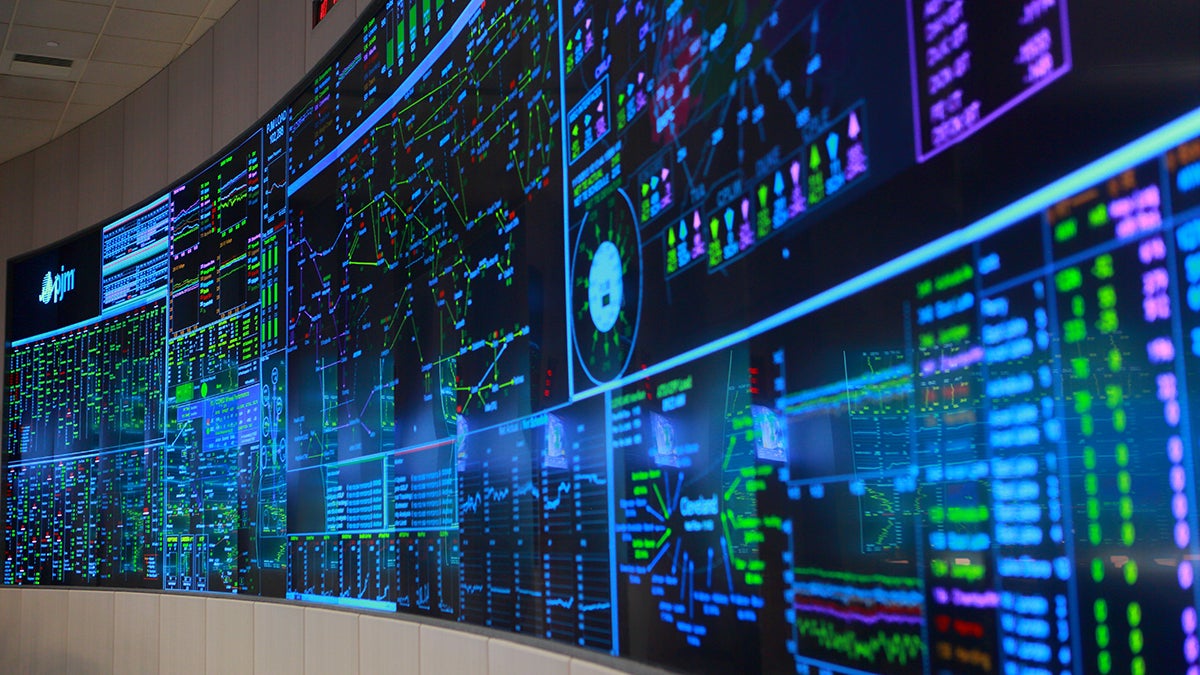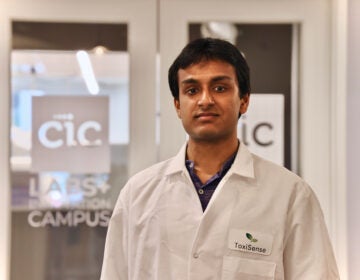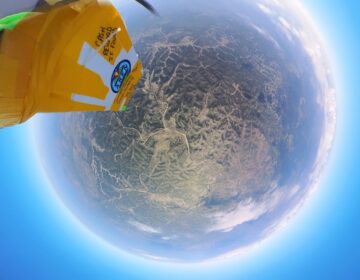What is the grid and why do renewables strain it?
Listen 5:49
A display showing the state of the grid section operated by PJM. (Courtesy of PJM)
In the push for an electrical energy source that can sustainably power the modern world — namely, renewables, like wind and solar — the delivery of the electricity is an important piece of the puzzle.
Electricity travels on the grid, but as more renewables come online it becomes harder to operate the existing grid as is.
To integrate more renewables into our everyday lives, the grid will have to evolve.
History of the grid
The grid consists of generators, high-voltage transmission lines, and a lower-voltage distributuon network. Generators can include everything from nuclear plants to those powered by coal, natural gas, or renewables like hydro, solar, wind, and biomass. High-voltage transmission lines, the thick cables strung between tall steel towers, transport the energy long distances. Then the electricity travels on the lower-voltage distribution network, the cables strung between utility poles, to get to consumers.
The grid wasn’t always like this.
In the late 1800s, places in need of steady light — California mines, lawyers’ offices, the New York Times — strung up very bright lights. Each string of lights had its own generator, called a dynamo, to power it. Those were the first grids.
Thomas Edison built a slightly larger grid in 1882, in lower Manhattan. His circuit allowed for more, but dimmer, lights.
Then, people figured out that electricity could power things other than light bulbs. But each little grid ran just one kind of voltage, and you couldn’t power a lamp at the same voltage as, say, a streetcar.
“So streetcar companies started to build their own grids and with their own dynamos. And then factories started to build their own grids. And there were competing light companies with their own grids,” said Gretchen Bakke, author of “The Grid.”
These many grids blackened the sky with their wires until inventor and engineer Nikola Tesla figured out how to put alternating current to use. Unlike prior technology, in which electric current flowed in one direction, alternating current switches direction back and forth. Alternating current allowed the system to step up and step down voltages, changing them as needed for the final use. It also allowed the power to travel farther.
“And that’s when you start to get what we think of now as ‘the grid,'” said Bakke.
Over time the many grids combined to form the three major grids of the U.S. — one in the East, one in the West, and one in Texas.
Running the grid
Third-party operators — not the generators or transmission line owners — run large sections of the major grids to ensure reliability and fairness to consumers. PJM manages a section of the eastern power grid that includes 13 states and Washington, D.C. The heart of the operation is an underground room with huge screens displaying colorful curves, numbers, live camera feeds, maps, and graphs.
“The hardest thing, when people come into this room, is don’t be completely awestruck by it,” said a PJM manager named Chris Pilong. “Your eye has no idea where to go when you first come into this room.”
During a recent visit, a handful of employees watched the curves inch along and the numbers flicker. The displays provide an overview of the section of the grid PJM operates.
PJM doesn’t own the grid. They run it, which means they keep it balanced. The amount of electricity that generators are putting onto the grid has to almost exactly match what consumers are using at any given moment. PJM oversees this process, tracking how much consumers are using, then calls up generators — like coal or nuclear plants — and tells them to ramp up or slow down production.
“It’s supply and demand,” Pilong said.
Think of it as a pipeline — if you pump too much water into a pipe, it could burst. Too little, and the trickle may never reach its destination.
If the grid is out of balance, consumers could experience a blackout.
During my visit on a Friday afternoon, the people in the control room did not seem fazed by this possibility.
“Typically businesses are starting to shut down on a Friday afternoon. Typically things are a little calm, a little quieter. You’re bringing your generators down. It’s a little bit easier,” Pilong explained.
That day was also mild outside, no need for major heating or air conditioning. “It’s really temperatures and human behavior that drive the demand,” Pilong added.
Models help PJM keep the grid balanced. But as renewables start to contribute a larger portion of the electricity traveling on the grid, it becomes harder to sustain that balance.
“It adds another source of variability and uncertainty to the resource mix,” said Aaron Bloom, with the National Renewable Energy Laboratory.
Evolving grid
Nuclear plants provide steady streams of power; they’re predictable. A gas plant can power up or down quickly, so it’s flexible. But a gust of wind? The sun? They’re harder to deal with because they’re neither.
“While we do know when the sun is going to rise and set everyday, we don’t exactly know how the clouds are going to formulate,” Bloom said.
Grid operators have to adjust to accommodate the whims of renewable energy.
First, because renewables depend on nature, weather and power forecasting need to improve, which is already happening.
Having more flexible power plants, to easily fill in when nature isn’t cooperating, is also key. Nuclear plants, for example, tend to stay on for long, continuous periods of time, without powering down. It’s hard to make adjustments if there’s good wind or, conversely, there’s a stretch of cloudy days. But certain natural gas plants can easily and quickly adjust their energy output, which makes them a better match to partner with renewables.
The grid will also require new transmission lines.
For one, many wind and solar farms are really remote.
In addition, new transmission lines would allow electricity to travel farther across an hour. A transmission line is like a smooth, wide highway, where lots of traffic can travel far fast. That’s important, because the eastern grid includes both New York City and Colorado, and there’s a lot of time between when the sun peaks on the East Coast and when the sun is high across the country. When Colorado is peaking at electricity production, it could be the New Yorkers peaking at consumption, as they sit down for dinner or turn on their TVs after work. Transmission lines could help smooth out the supply and demand system wide.
The grid would also benefit from more energy storage. Renewables working at peak conditions can produce a lot of energy, but the grid can’t store it for another day.
“There’s a lot of new promising technologies that help us get you know four or six or maybe eight hours of storage, so you could charge them up during the day when the sun is shining. But what we don’t have yet for storage is this multi-week multi-day seasonal storage that still is pretty elusive,” Bloom said.
Bloom added that that last piece isn’t as important until we really start seeing a lot of renewables — upwards of 30 or 40 percent penetration — on the grid. We’re not there, yet.
On PJM’s section of grid, renewables make up just 4 percent of the energy. But last year in Texas, it was 16 percent, and in California it was 20 percent.
More renewables are coming online and the grid needs to keep up.
WHYY is your source for fact-based, in-depth journalism and information. As a nonprofit organization, we rely on financial support from readers like you. Please give today.






